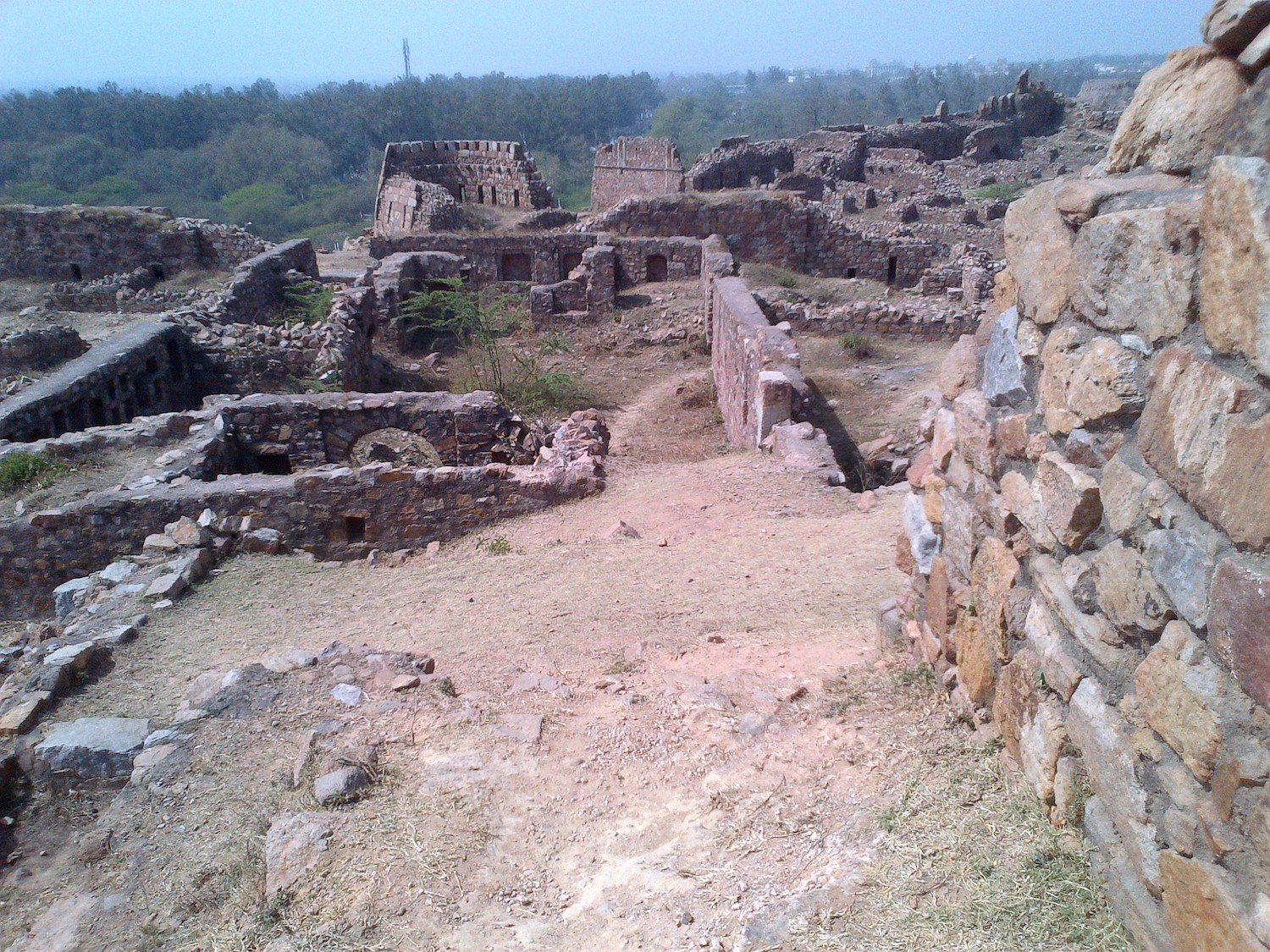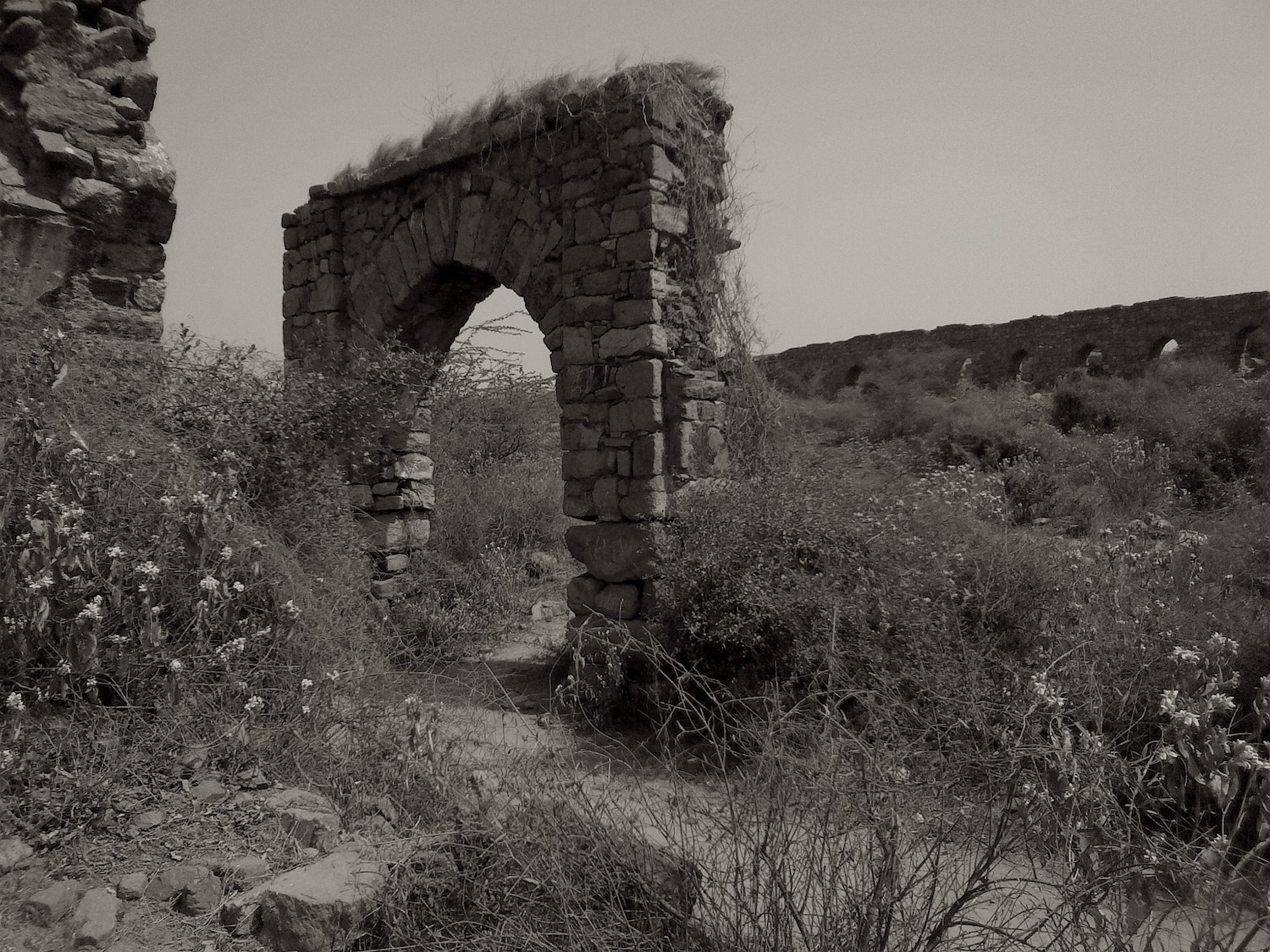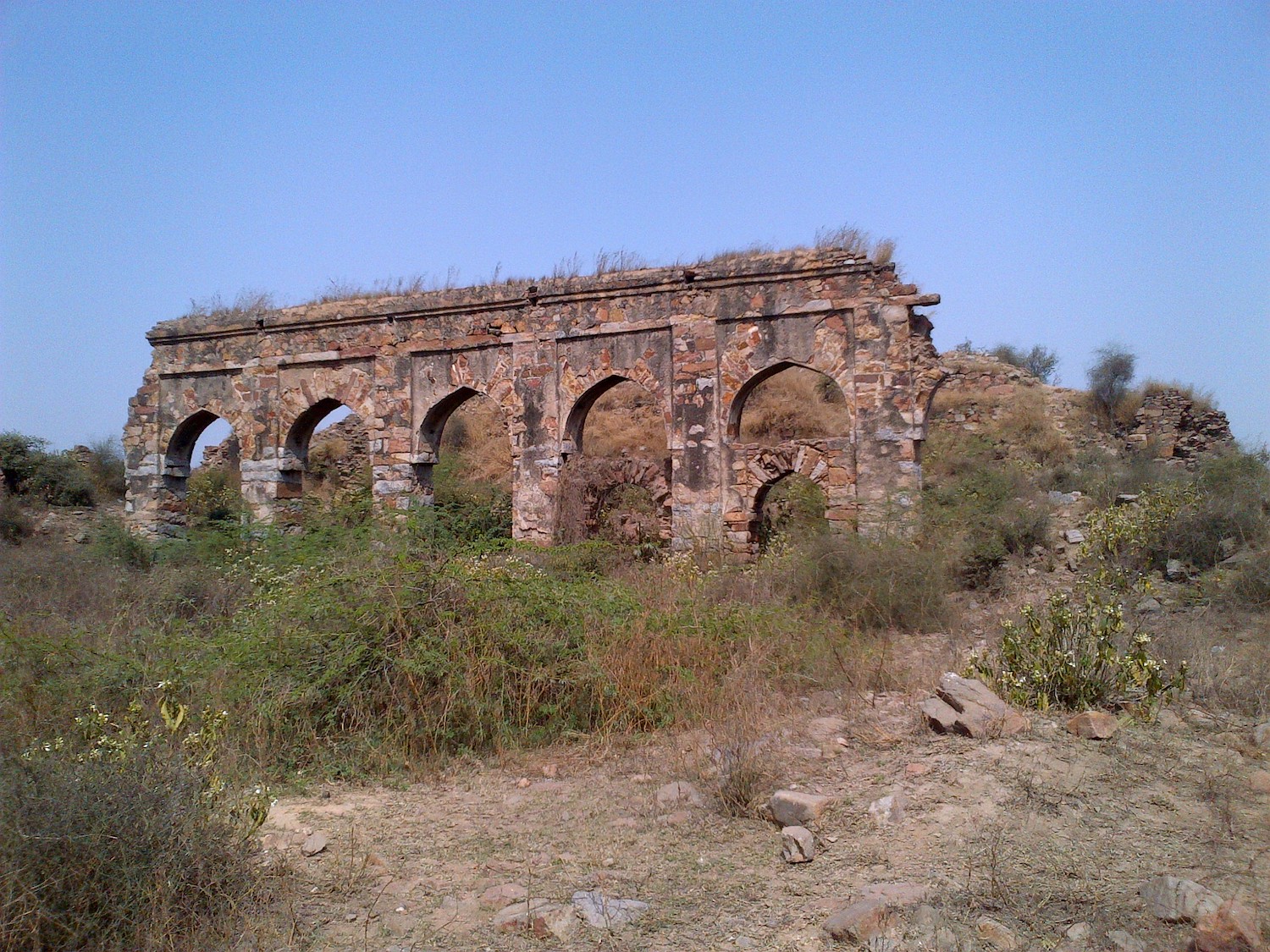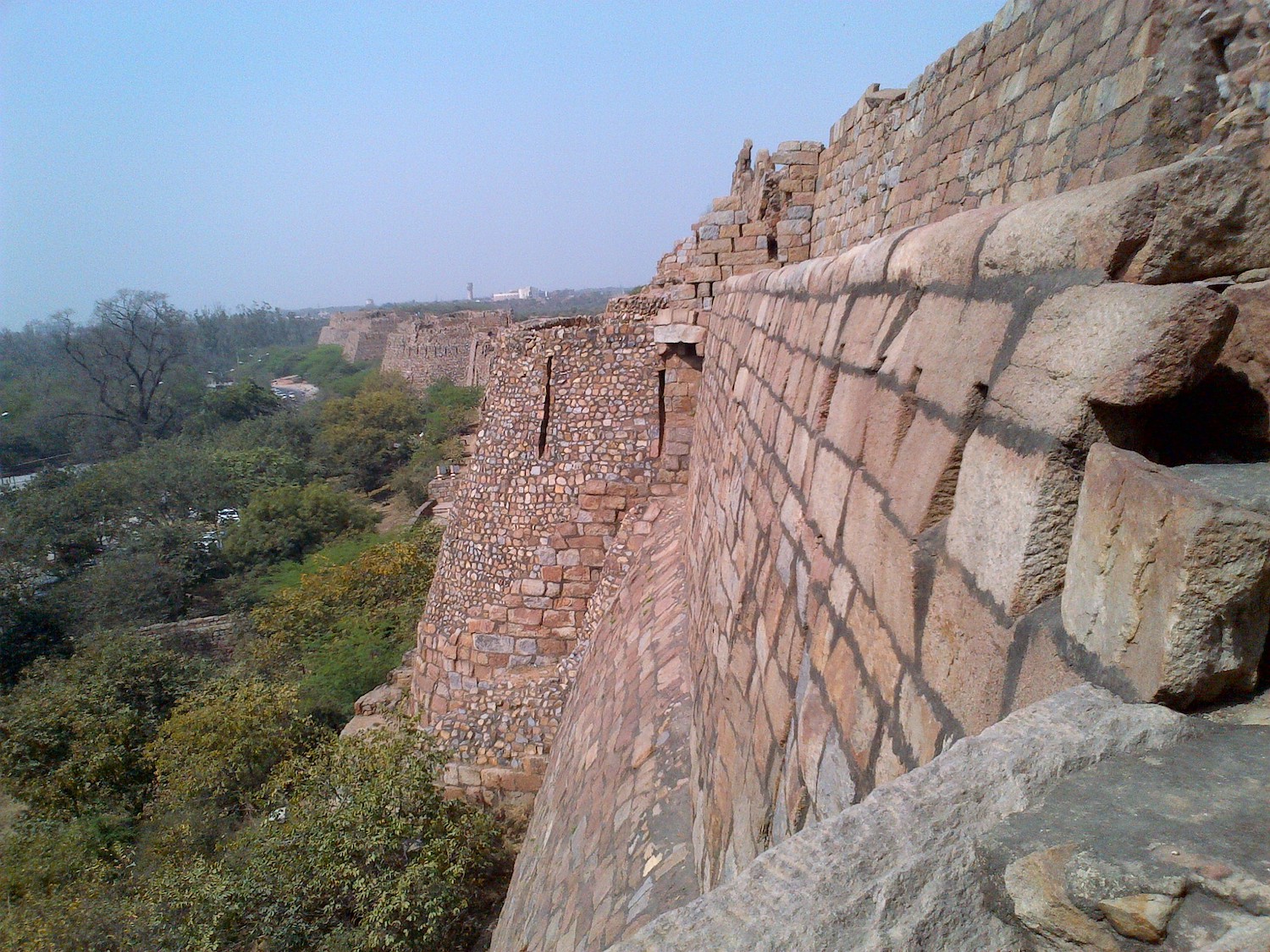Ghazi Malik was a feudatory of the Khilji rulers of Delhi, India. Once, while on a walk with his Khilji master, Sultan Mubarak Khilji, Ghazi Malik suggested that the King build a fort on a hill in the southern portion of Delhi. Mubarak Khilji jokingly told Ghazi Malik to build the Fort himself when he became the King.
As fate transpired, in 1321 AD, Ghazi Malik drove away from the Khiljis and assumed the title of Ghias-ud-din Tughlaq, thereby laying the foundation of the Tughlaq dynasty. He immediately started the construction of his fabled city, which he dreamt of as an impregnable, yet beautiful Fort to keep away the Mongol marauders. However, destiny would not be as he would have liked. The Fort was built during 1321-1325 AD.
To ensure that the 6.5-square-kilometre Fort to be built in record time, he issued a dictate that all labourers in Delhi must work on his Fort. Nizamuddin Auliya, a Sufi mystic, got incensed with this order as the work on his baoli (stepwell) stopped. He apparently cursed Tughlaq “Ya rahey hissar, ya basey Gujjar” (“May it [the fort] remain unoccupied/infertile, may the herdsmen live here”). He also cursed the King, “Hunuz Dilli dur ast” (“Delhi is still far away”). Ominously, this came true shortly after.

Image by Yap Cafe.
Ghias-ud-din Tughlaq died at Kara (in modern-day Uttar Pradesh) in 1324 AD, returning from a successful campaign in Bengal. His death was not without intrigue. It is alleged that the young prince and successor, Mohammed bin Tughlaq, ordered that the King’s tent may fall on him so that he would be killed and it would seem like an accident. He was laid to rest in the mausoleum in the Fort, which he himself had built and designed, but never got an opportunity to live in. The tomb, located at the southern side of the Fort, is enclosed in a courtyard with fortified walls and a fine example of Indo-Islamic architecture.
The Fort remained unoccupied after the death of Ghias-ud-din Tughlaq until in 1327 AD. Ghias-ud- din Tughlaq’s successor, Mohammed bin Tughlaq, went on to built another fort.
The Tughlaqabad Fort still consists of remarkable massive stone fortifications surrounding the city's irregular ground plan. The sloping rubble-filled city walls, a typical feature of the Tughlaq dynasty's monuments, are between 10 and 15 meters high, topped by battlemented parapets and strengthened by circular bastions of up to two-stories’ height. The city is supposed to have once had as many as 52 gates—of which only 13 remain today. The fortified town contained seven rainwater tanks for its residents. The Tughlaqabad Fort divided into three parts—the wider city area, the citadel and tower, and the palace area, which housed the royal residences.

Image by Yap Cafe
The Tughlaqabad Fort is an interesting tourist spot to visit while in Delhi. The interesting history of the Tughlaqabad Fort and the many different parts that were built around the Fort make this an appealing part of the city’s history.




